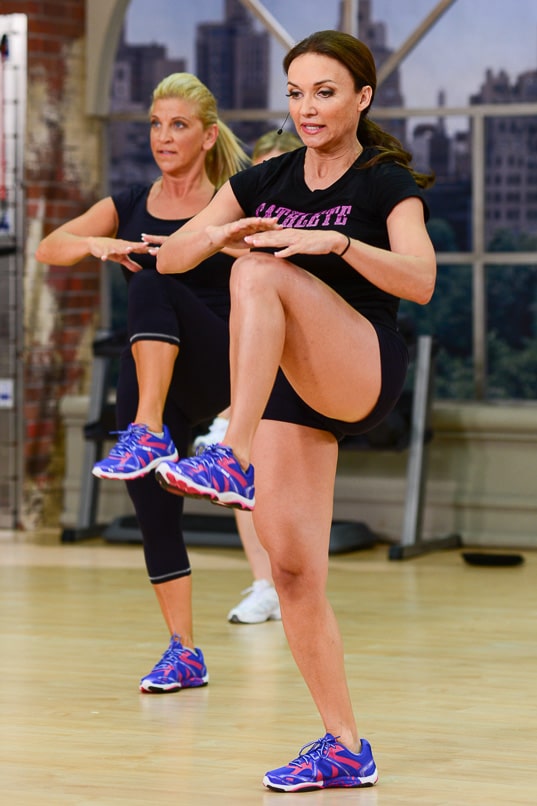
Why is high-intensity exercise more effective? For one, it activates fat-burning hormones like adrenalin and growth hormone more than moderate-intensity exercise and keeps them elevated for longer periods of time.
The problem with high-intensity exercise is you can only do it for so long before you “hit the wall” and have to stop due to the build-up of acid and waste products in your muscles. With interval training, you work out at a very high intensity, but also have a rest interval to partially recover before beginning the next active cycle.
Structuring Interval Training
There are lots of ways to structure interval training workouts. You can keep the active intervals short and the rest periods long, keep the rest and recovery phases roughly equal or any variation thereof. Have you ever wondered whether there’s a “best” way to structure interval training? Should your active intervals be the same in length as your rest intervals – more, less – or does it matter?
A small study published in the Journal of Strength and Conditioning looked at this issue. Researchers asked six people to run on a treadmill as fast as they could for four minutes. After their active interval, they rested for four minutes (one to one ratio of activity to recovery), two minutes (two to one ratio) or one minute (four to one ratio).
In this particular study, two minutes of recovery was ideal, a two to one ratio. Reducing the recovery interval time from two minutes to one minute made it hard for the participants to maintain the same intensity during the active intervals. Prolonging the recovery interval to four minutes didn’t improve performance any more than a two minute recovery period.
How You Structure Interval Training Sessions Depends on Your Goals
Irrespective of this study, there’s really no single “right” way to structure interval training. It really depends on what you’re trying to achieve. If your goal is to improve your aerobic capacity, longer active intervals of 3 to 5 minutes and roughly equal recovery periods seem to work best.
To improve your anaerobic fitness, many experts suggest keeping the intervals shorter – 30 seconds to 2 minutes and make the rest intervals 2 to 4 times as long as the active intervals. Improving your anaerobic fitness helps you better tolerate acid and waste products that build up in your muscles during exercise. Your body becomes better at buffering acids that build up so you don’t experience fatigue as quickly or easily. This means you can withstand higher intensity exercise longer. Working at such a high-intensity also builds strength and power and helps you perform better in sports that require starting and stopping quickly.
If you do Tabata training you will usually do a 20 second all-out work interval followed by a 10-second active rest and then repeat this cycle 8 times. This 2 to 1 work to rest ratio is extremely demanding and the reason why Tabata workouts have to be so short.
The Benefits of Interval Training
What advantages does interval training offer? Interval workouts improve aerobic fitness and cardiovascular health without forcing you to do long periods of moderate-intensity exercise like running or cycling. You can get similar cardiovascular benefits doing a workout that takes up to half the time. Perfect if you don’t have the time or inclination to spend 45 minutes to an hour doing aerobic exercise.
Research shows interval training improves a number of measures of cardiovascular health while increasing insulin sensitivity. That means better blood sugar control and less insulin circulating in your bloodstream to force your body to store fat.
Then there are the fat loss benefits of interval training. It seems counterintuitive that a shorter workout could be a more effective fat burner than a longer one, but you make up for the time loss with intensity. Plus, you get an after-burn effect that boosts your metabolism for hours after you finish.
Long periods of moderate-intensity cardio, especially in an unfed state, can lead to muscle loss by increasing cortisol. With high-intensity training, you preserve more lean body mass by keeping your workout shorter. At the same time, you get a greater surge of muscle-building hormones like growth hormone and testosterone due to the higher intensity.
Getting the Most Out of Interval Training
Regardless of the structure of your intervals, you’ll get the best results if you work as hard as you can during the active intervals and take it easy during the rest or recovery intervals. Many people make the mistake of not working hard enough during the active intervals and not slowing down enough during the rest intervals. Make sure there’s plenty of contrast between the two. Also, don’t do high-intensity interval training every day. You don’t need to. You can get the benefits doing as little as 15 to 20-minute intense interval training twice a week. Rest one to two days between interval training sessions.
The Bottom Line?
There are a number of ways to structure interval workouts. How you do it depends on your goals. Interval workouts require no equipment but they offer maximum benefits in a minimum amount of time. Use them to your advantage. Who can argue with better results with less time invested?
References:
Prevention Magazine. “How Long Should You Rest Between Intervals?”
J Physiol. 2013 Feb 1;591(Pt 3):641-56
IDEA Fitness. “Interval Training: The New and Better Way to Train Your Clients?”
European Journal of Applied Physiology 86 (5): 411-7. doi:10.1007/s00421-001-0568-y
Bodybuilding.com. “What is the Best Interval Training Program?”
Related Articles By Cathe:
Hiit Training: Get More Done with Less Perceived Effort
5 Common Myths About Interval Training
How High-Intensity Interval Training Slows Aging at the Cellular Level
How to Incorporate Interval Training Into Your Exercise Program
Is It Okay to Do Hiit Training Every Day?

